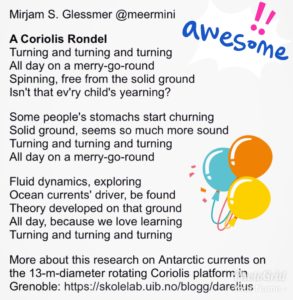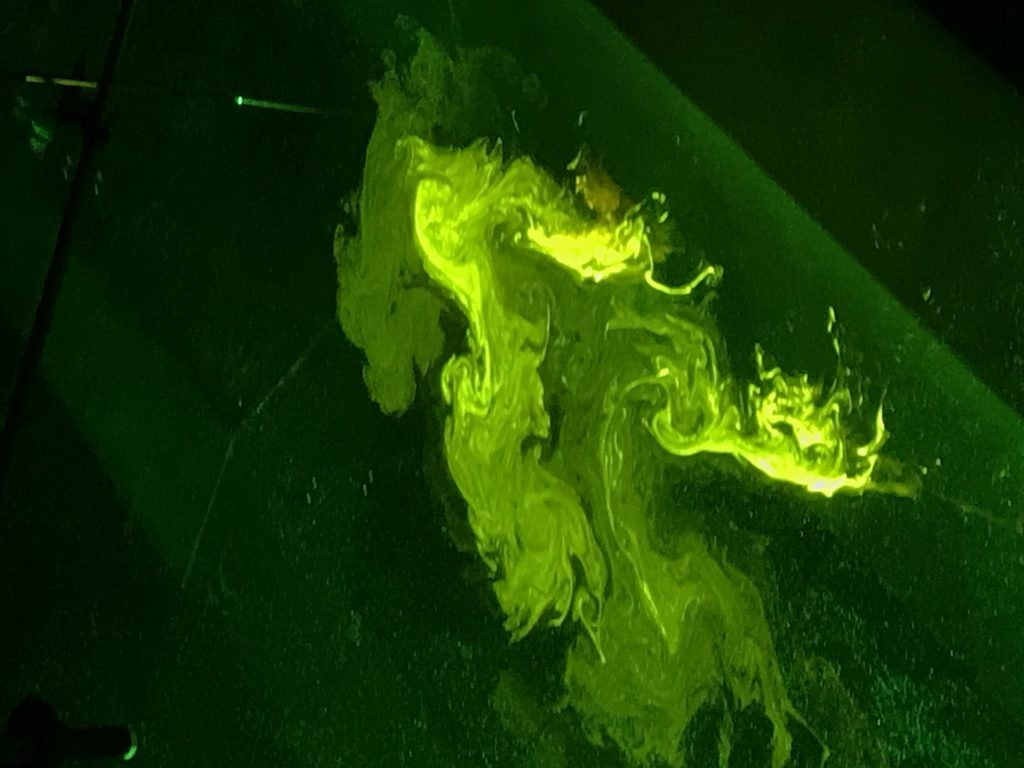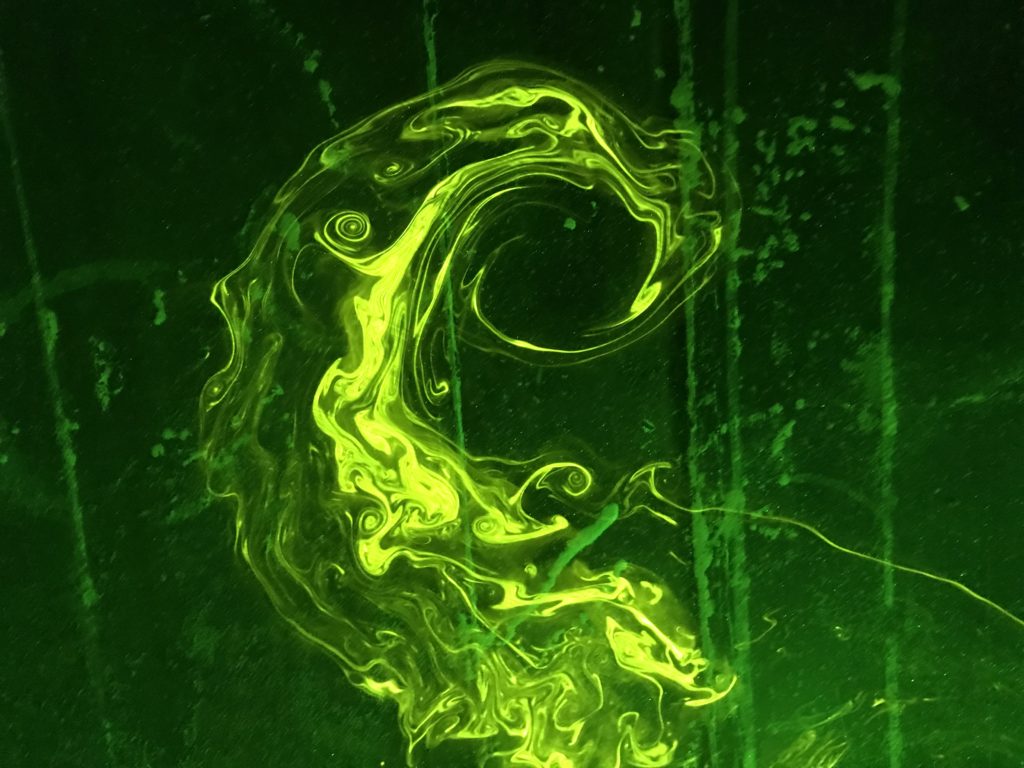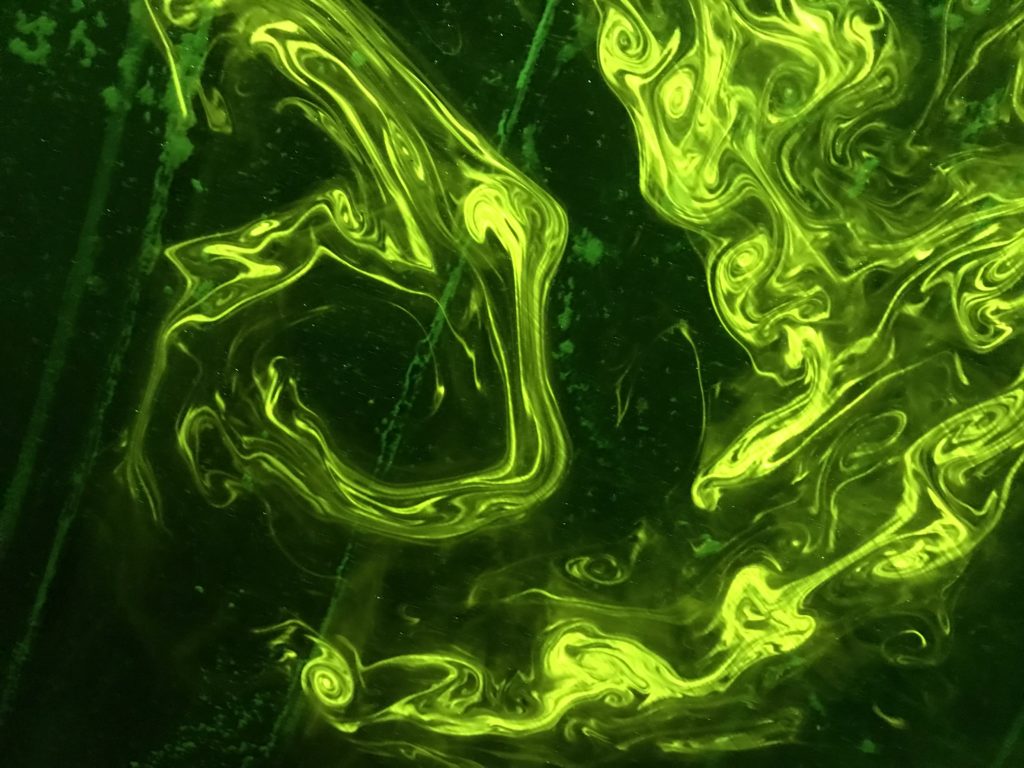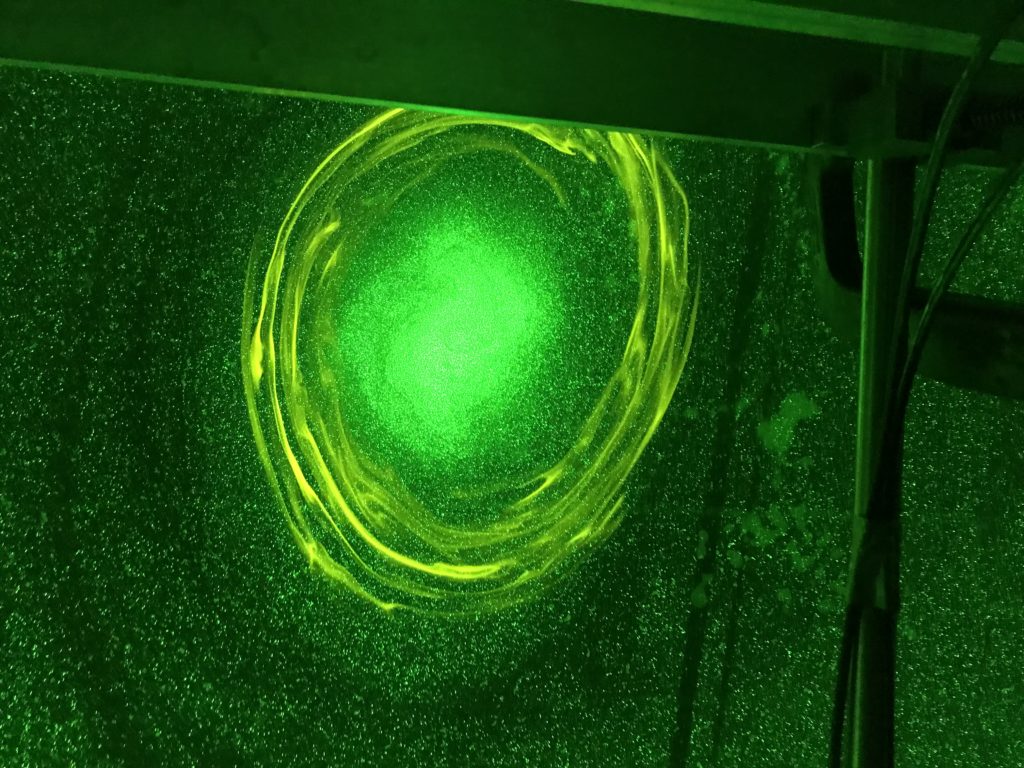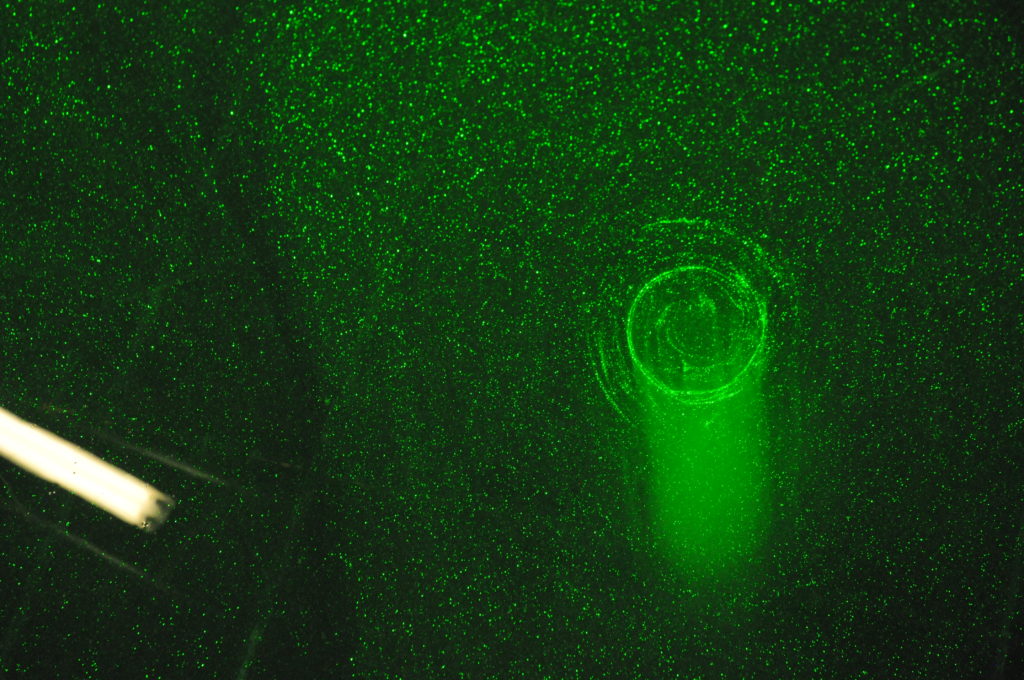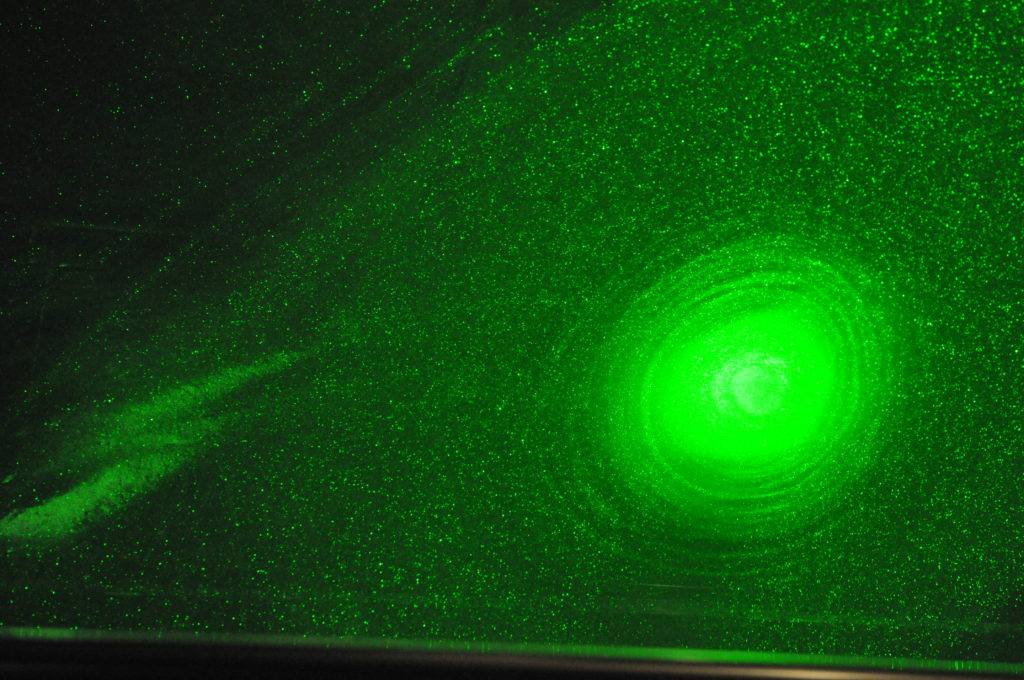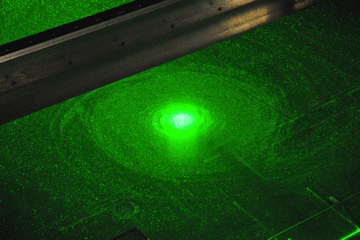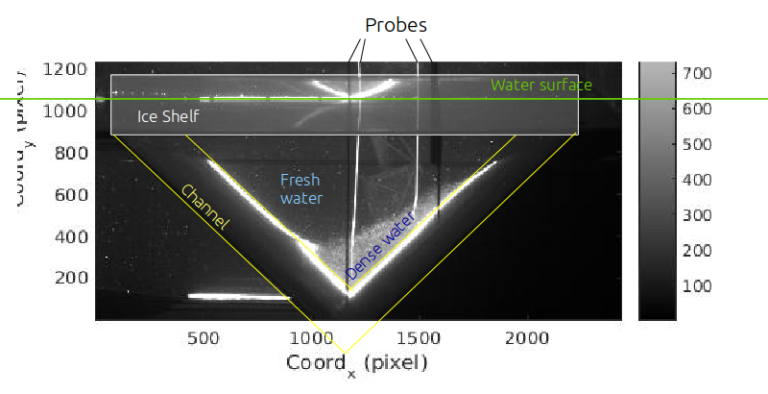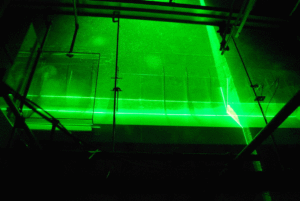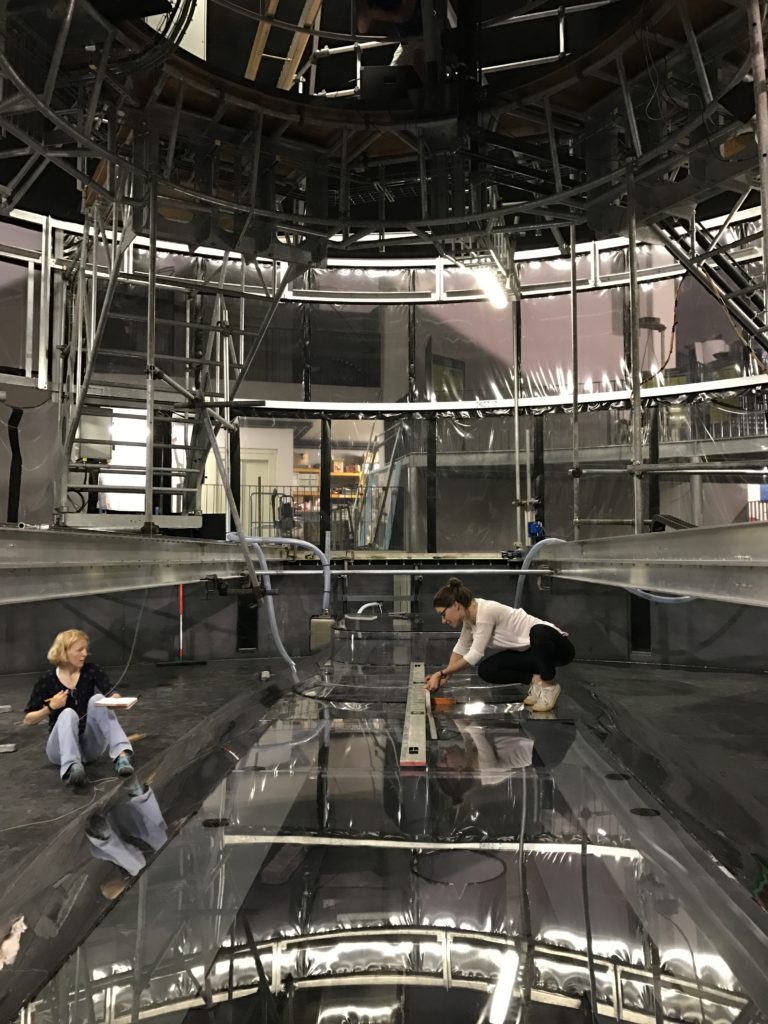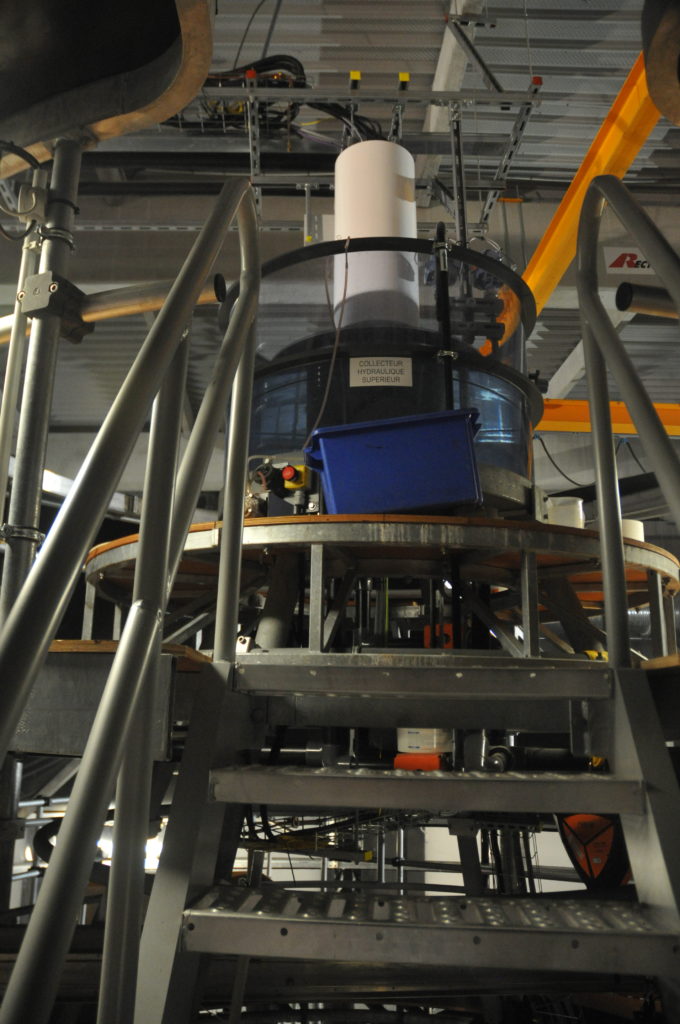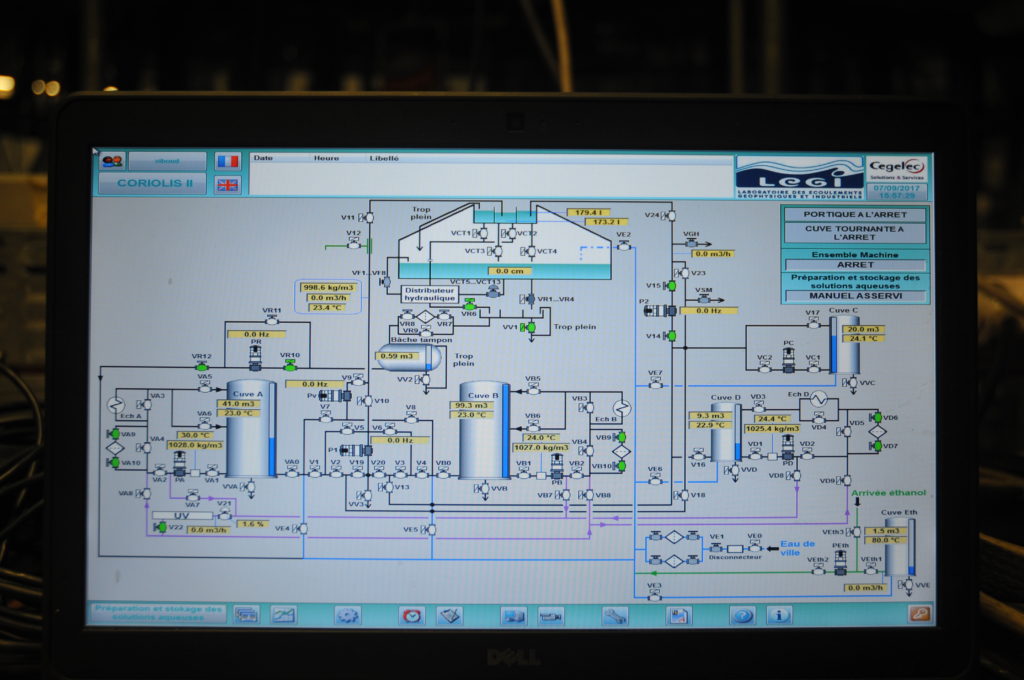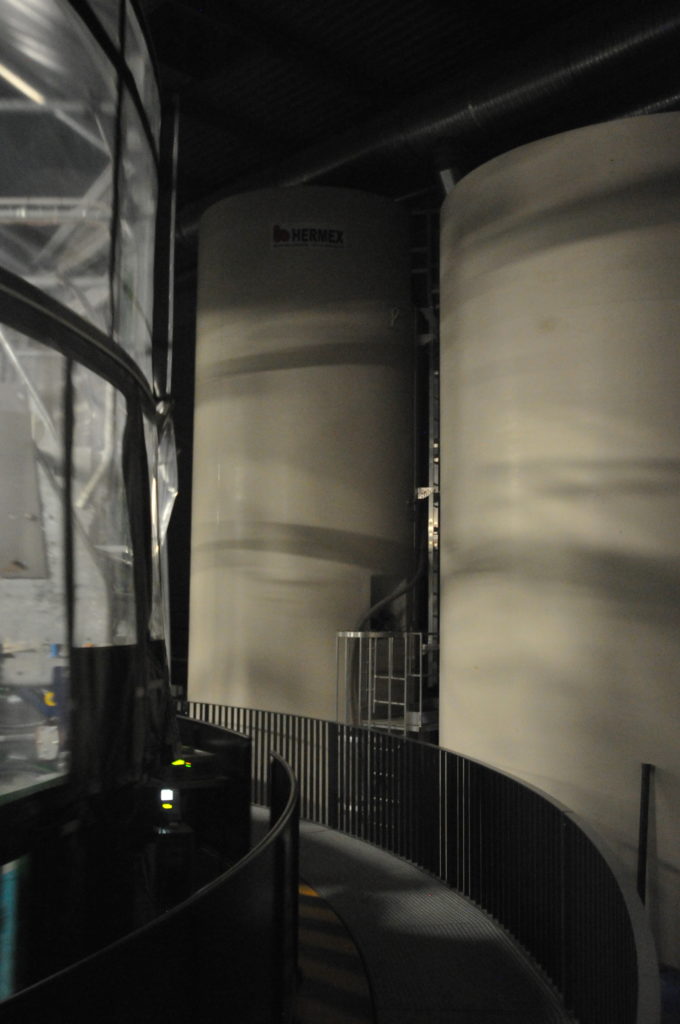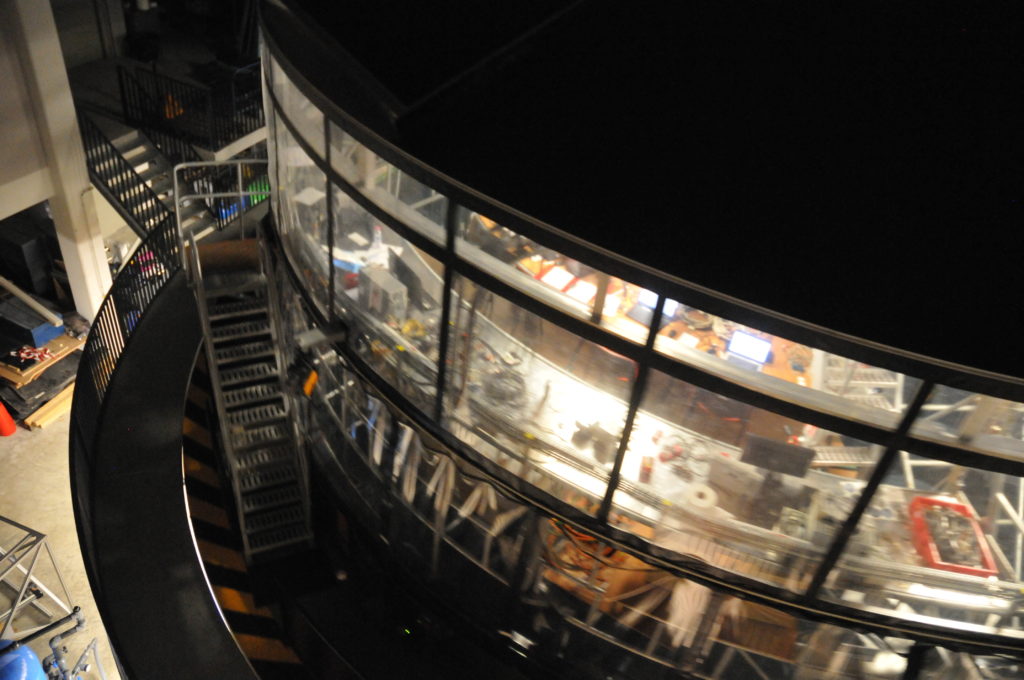I remember vivid discussions with Anna over a loaf of freshly baked bread from our new bread machine. We were in the Southern ocean, somewhere in between New Zealand and the Getz Ice shelf in the Amundsen Sea on board the Korean icebreaker Araon and we talked about the moorings we were about to deploy, the proposal we have started writing, the experiments we wanted to run – but most of all we talked about what actually happens when ocean currents meet an ice shelf front. That was four years ago – and I’m super excited to see that a few days the results of those discussions (and a good deal of work on board Araon, on and around the rotating Coriolis platform in Grenoble and in numerous offices around the world) were published in Nature! Ice front blocking of ocean hear transport to an Antarctic ice shelf by A. Wåhlin, N. Steiger, E. Darelius, K. M. Assmann, M. S. Glessmer, H. K. Ha, L. Herraiz-Borreguero, C. Heuze, A. Jenkins, T.W. Kim, A. K. Mazur, J. Sommeria and S. Viboud – in Nature! (For those of you who are not into peer reviewed litterature and scientific publishing – this is probably scientific equivalent to an Olympic gold medal!)
So what did we find out – well, to make a long story short – we oceanographers talk about two types of currents. They are both driven by pressure gradients – but for what we call barotropic currents, the pressure gradient is caused by differences in sea level (i.e. in how much water there is) while for baroclinic currents, the pressure gradient is caused by differences in density (i.e. how heavy the water is). The barotropic current is depth independent – this means that the current is equally strong from the surface down to the bottom, while the baroclinic current changes in strength (and potentially in direction) with depth. Our observations showed that the currents bringing heat towards the Getz ice shelf had both a barotropic and a baroclininc (bottom intensified) part. The barotropic part was the stronger one and the one carrying the majority of the heat. But when the current reached the ice shelf front (Anna was brave enough to deploy a mooring only 700m from the ice shelf front) – the strong barotropic current had to turn, and only the weaker baroclinic current was able to enter the ice shelf cavity. The experiments at the rotating table showed the same thing – barotropic currents turned at the front, while baroclinic currents could enter.

You can read more about what we did in the Coriolis lab here, and about when Karen recovered the moorings here

